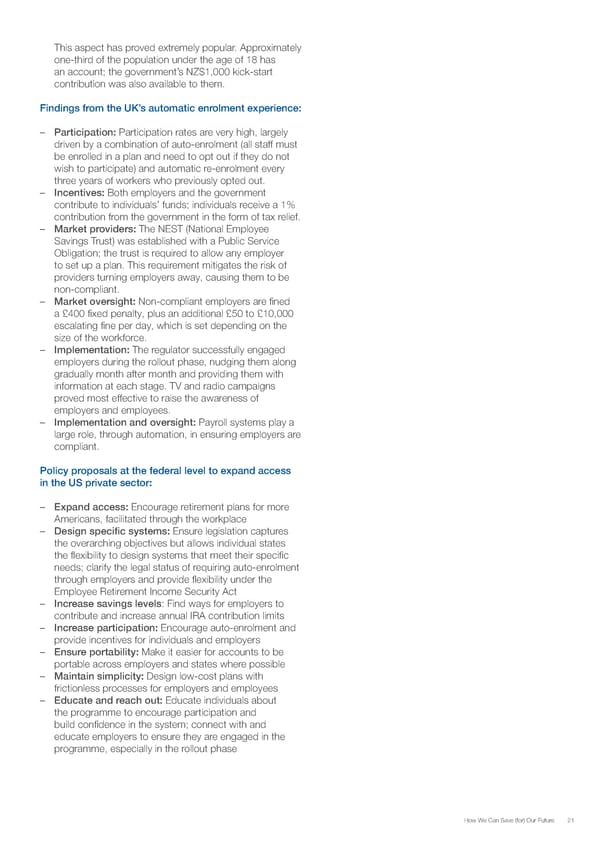This aspect has proved extremely popular. Approximately one-third of the population under the age of 18 has an account; the government’s NZ$1,000 kick-start contribution was also available to them. Findings from the UK’s automatic enrolment experience: – Participation: Participation rates are very high, largely driven by a combination of auto-enrolment (all staff must be enrolled in a plan and need to opt out if they do not wish to participate) and automatic re-enrolment every three years of workers who previously opted out. – Incentives: Both employers and the government contribute to individuals’ funds; individuals receive a 1% contribution from the government in the form of tax relief. – Market providers: The NEST (National Employee Savings Trust) was established with a Public Service Obligation; the trust is required to allow any employer to set up a plan. This requirement mitigates the risk of providers turning employers away, causing them to be non-compliant. – Market oversight: Non-compliant employers are fined a £400 fixed penalty, plus an additional £50 to £10,000 escalating fine per day, which is set depending on the size of the workforce. – Implementation: The regulator successfully engaged employers during the rollout phase, nudging them along gradually month after month and providing them with information at each stage. TV and radio campaigns proved most effective to raise the awareness of employers and employees. – Implementation and oversight: Payroll systems play a large role, through automation, in ensuring employers are compliant. Policy proposals at the federal level to expand access in the US private sector: – Expand access: Encourage retirement plans for more Americans, facilitated through the workplace – Design specific systems: Ensure legislation captures the overarching objectives but allows individual states the flexibility to design systems that meet their specific needs; clarify the legal status of requiring auto-enrolment through employers and provide flexibility under the Employee Retirement Income Security Act – Increase savings levels: Find ways for employers to contribute and increase annual IRA contribution limits – Increase participation: Encourage auto-enrolment and provide incentives for individuals and employers – Ensure portability: Make it easier for accounts to be portable across employers and states where possible – Maintain simplicity: Design low-cost plans with frictionless processes for employers and employees – Educate and reach out: Educate individuals about the programme to encourage participation and build confidence in the system; connect with and educate employers to ensure they are engaged in the programme, especially in the rollout phase How We Can Save (for) Our Future 21
 How can we save for our future Page 20 Page 22
How can we save for our future Page 20 Page 22